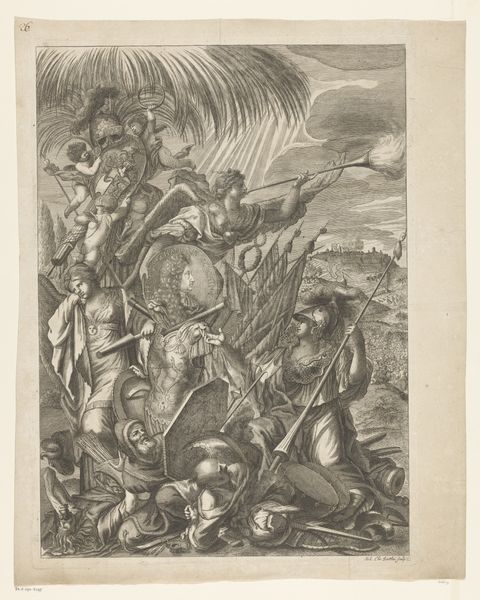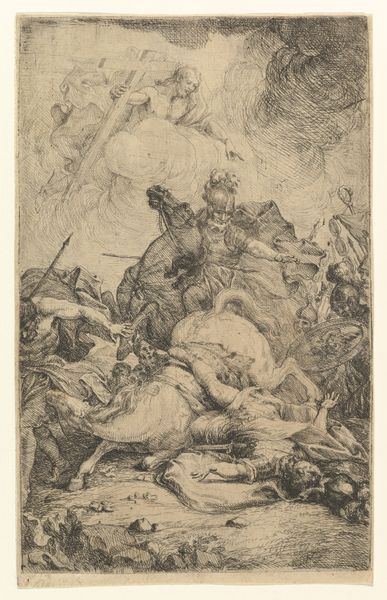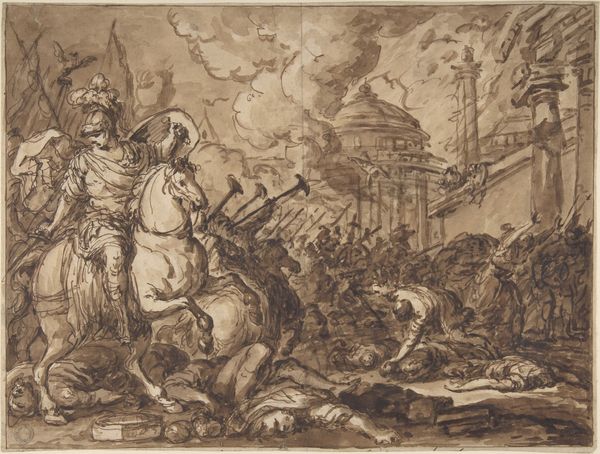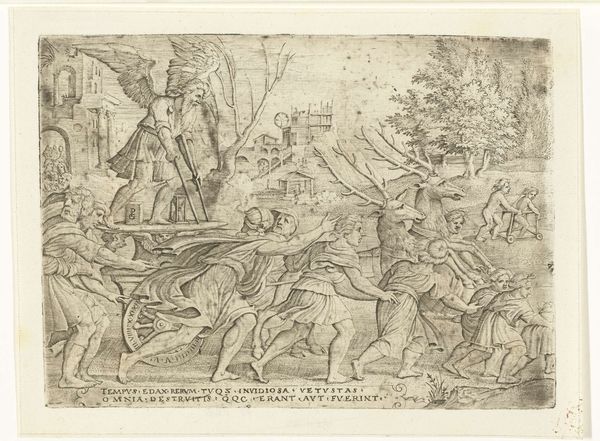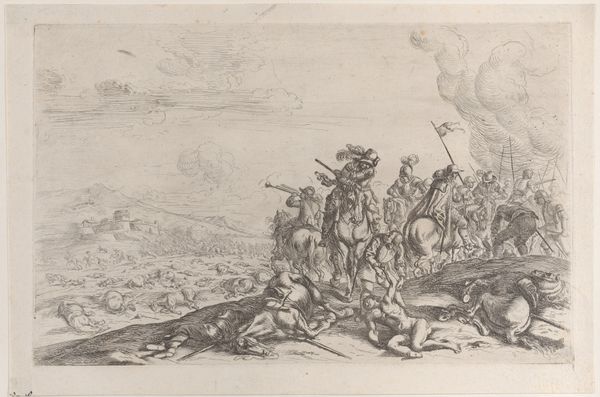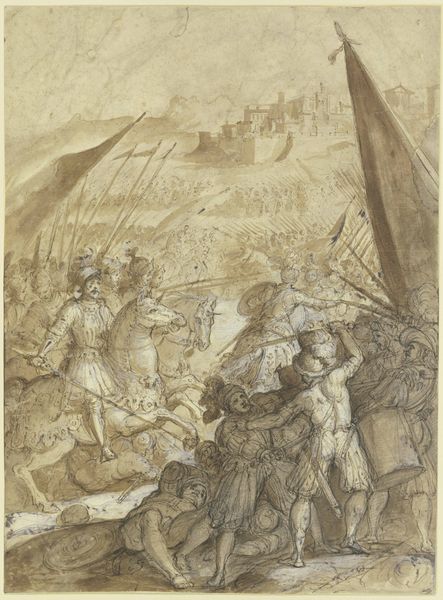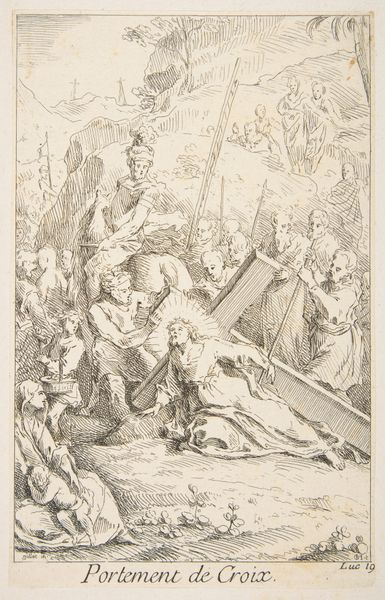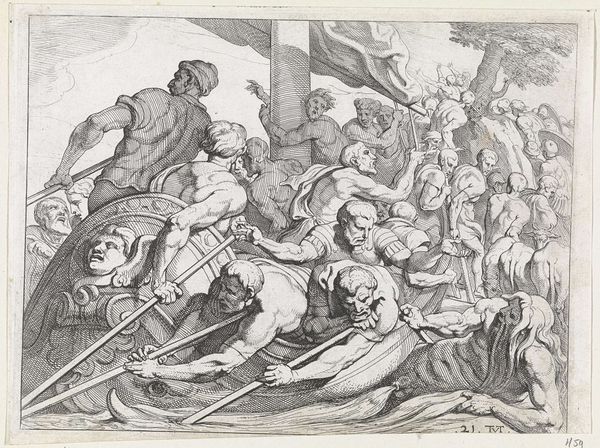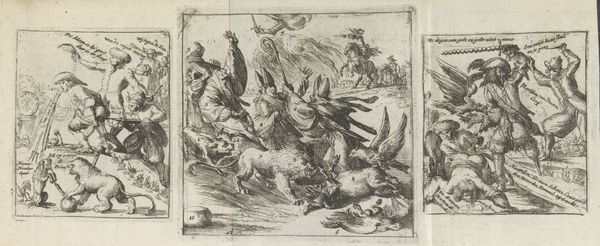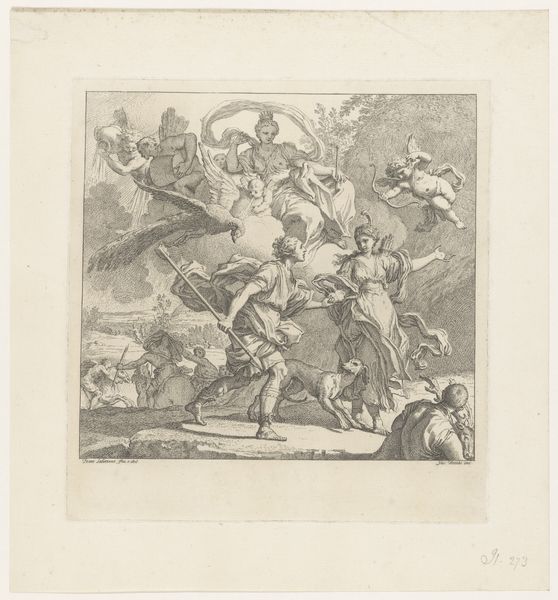
The Emperor Maxentius Ordering the Burning of the Fifty Wise Men... 1500 - 1538
0:00
0:00
Dimensions: sheet: 6 5/8 x 6 5/16 in. (16.9 x 16 cm)
Copyright: Public Domain
Editor: So, this is Albrecht Altdorfer’s "The Emperor Maxentius Ordering the Burning of the Fifty Wise Men..." from the early 16th century, a drawing rendered in ink on paper. The scene depicted is incredibly brutal. What jumps out at you when you look at it? Curator: The raw, almost frantic energy! It’s a far cry from the polished idealism of, say, Italian Renaissance art, isn’t it? The scratchy lines, the chaotic composition...it feels like a nightmare captured in ink. Can you sense the tension Altdorfer's trying to convey? It is like peering into some twisted vision, where the weight of power and brutality becomes almost tangible. It makes you wonder what stories lay hidden within its swirling lines, right? Editor: Absolutely! I get the sense of turmoil. It is really amazing for something over 500 years old! How would a viewer at the time react to this, given it’s coming out of German Expressionism? Curator: That's a really interesting point. It comes well before German Expressionism as a formal movement, but you can already see seeds of it. Imagine, back then, seeing rulers depicted as violent and illogical – the sheer emotional intensity must have been unsettling, a jarring contrast to more idealized depictions of power. The lack of clarity isn’t accidental either – I reckon it invites the viewer to contemplate the unsettling ambiguities inherent in violence itself. Does that ring true for you? Editor: It does, especially considering the political and religious conflicts of the time. It makes you wonder what Altdorfer believed. Thanks, that helps clarify my understanding a lot! Curator: And thank *you* for making me think about those political influences... art is, after all, a dialogue, don’t you think?
Comments
No comments
Be the first to comment and join the conversation on the ultimate creative platform.
